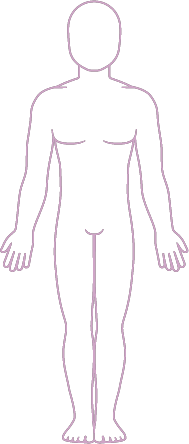WHAT TO DO FOLLOWING YOUR LEMTRADA INFUSIONS
good to know someone is looking after me.
RACHEL, LEMTRADA patient
BEGIN YOUR MONTHLY MONITORING
Certain side effects of LEMTRADA can happen months and even years after treatment. That’s why it is important to begin monitoring after your first infusion and continue regular monitoring until 4 years after
your last infusion even if you’re feeling well and do not have any symptoms from LEMTRADA and
relapsing MS. Monitoring involves:
Monthly blood and
urine tests
Ongoing symptom
self-checks
Yearly skin
exams
SELECTING A MONITORING LOCATION
LAB
Testing at any LabCorp® or Quest Diagnostics™ patient service centers.
HEALTHCARE PROVIDER’S OFFICE
Samples can be taken at your healthcare provider’s office.
Sanofi reserves the right at any time and without notice to modify or change eligibility criteria or discontinue this program.
Trademarks not owned by Genzyme Corporation or Sanofi are the property of their respective owners.
LEARN WHAT SYMPTOMS TO LOOK FOR
As a part of monitoring, you should perform regular body checks at home by yourself in a mirror, or with the help of a family member or friend, to examine for any physical changes. Use the tool below to help identify what to look for.
Select a symptom to learn about its impact.
Symptoms to Identify with Self-Checks

EYES, NOSE, AND MOUTH
- Yellowing of the whites of your eyes
- Eye issues including swelling and/or vision problems
- Bleeding from gums or nose that is new or takes longer than usual to stop
- Swelling in your mouth or throat
- Drooping of parts of your face
RESPIRATORY AND THROAT
- Cough that is not caused by a cold
- Coughing up blood
- Trouble swallowing or breathing
- Hoarseness or other voice changes that don’t go away
- Swelling in your throat
- Wheezing
- Shortness of breath
BODY PAIN
- Neck pain
- Chest pain or tightness
- Sudden severe headache
- Stomach pain or discomfort
BOWEL AND URINARY ISSUES
- Constipation
- Blood in the urine (red or tea-colored)
- Decrease in urine
- Dark urine
SKIN
- Easy brusing
- Small, scattered spots that are red, pink, or purple
- Yellowing of the skin
- Bleeding from a cut that is hard to stop
- Swelling in your legs or feet
- Swelling in your neck
- New lump
- Rash
OTHER
- Fast, slow, or irregular heartbeat
- Excessive sweating or feeling cold
- Weakness
- Worsening tiredness
- Nervousness
- Unexplained weight loss or gain
- Loss of appetite
- Fever
- Swollen glands
- For women: heavier menstrual periods than normal
- Nausea or vomiting
- Weakness on one side
- Difficulty with speech
- Fatigue
Contact your healthcare team if you experience any of the above symptoms, or new or worsening medical problems that have lasted several days, including changes in energy or mood or problems with thinking and/or balance.
CHOOSE WHAT YOU EAT CAREFULLY
People who are about to begin or have recently started treatment with LEMTRADA can be more vulnerable to a serious infection caused by listeria, called listeriosis. Listeria infections have occurred as early as 3 days after treatment and up to 8 months after the last LEMTRADA dose.
Read these food safety tips to help you lower the risk of listeria infection.
The foods listed here act on the immune system to reduce the production of inflammatory mediators and provide antioxidants that can help reduce inflammatory stress. Overall, eating healthy helps the body’s immune system work better.
Fruits
Berries, oranges, cherries, tomatoes yes, tomato is a fruit!
Nuts
Almonds, walnuts
Legumes
Beans, lentils
Spices
Turmeric, garlic
Veggies
Leafy greens, like spinach and kale
Fatty Fish
Salmon, tuna, mackerel
Whole Grains
Oatmeal, brown rice, whole wheat bread
Olive Oil
Use it in cooking, sauces, and dressings


